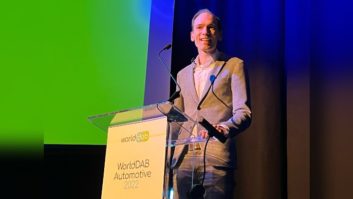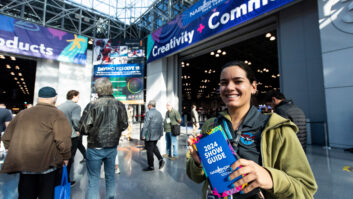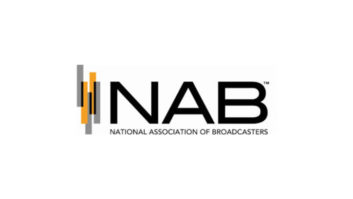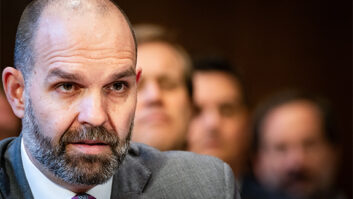 The car industry’s importance to the continued economic health of radio was at the heart of the WorldDAB Automotive 2022 conference, held in London and online last week.
The car industry’s importance to the continued economic health of radio was at the heart of the WorldDAB Automotive 2022 conference, held in London and online last week.
The relationship between these two giants was discussed during the trans-Atlantic session “Working With the Car Industry: Broadcaster Lessons Learned.”
It was presented by April Carty-Sipp, the vice president of industry affairs at the National Association of Broadcasters in the United States, and Ben Poor, project manager for digital radio at the European Broadcasting Union.
AM Remains Important in U.S.
For North American broadcasters, persuading automakers to continue supporting in-car AM radio is a big challenge.
This is particularly true when dealing with electric automakers, said Carty-Sipp. They are concerned about AM’s vulnerability to noisy static caused by electric propulsion systems, she explained, even though NXP Semiconductors has “developed chips and architecture that can combat this interference issue in AM radio.”
As well, NAB has been testing all-digital AM radio reception with Xperi in both electric and fossil fuel-propelled cars, “and found some good results as far as noise.”
In trying to protect in-car AM radio, the NAB is trying to preserve service to some 48 million weekly listeners.
“The audience that’s listening to AM radio in the U.S. on a regular basis is very large,” said Carty-Sipp. Leaving AM radios out of new cars “doesn’t only affect small markets and rural areas, but large markets in the U.S. where we’re talking about 400,000 to 600,000 listeners a week in cities like New York, Los Angeles and Chicago. In some cases, AM is number one in the market … which are the news and the talk stations.”
Staying Prominent in Cars Matters
Ben Poor said, “We don’t necessarily have that much AM in Europe,” so keeping AM radios in cars isn’t as much of a priority there. Instead, what the EBU’s radio members care about is the challenge of retaining radio’s “prominence” in car entertainment systems, at a time when streaming and other non-radio platforms are muscling this medium aside.
To prevent this from happening, EBU’s members have talked about “having a dedicated radio button” in new cars, but are more concerned with “how radio services will be prominent in the future, whether that would be (through) a defined radio button or a radio application, but also, for instance, their own applications.”
The EBU’s goal is to ensure that European public radio broadcasting retains the prominence they’ve enjoyed among listeners for the past 100 years, as “disseminators of information, entertainment and education.”
Future on the Dash
Despite European concerns about radio retaining its in-car prominence, Poor said that he is “actually quite optimistic” about radio’s future on the dashboard. The reason? “Radio broadcasters have kind of a secret sauce: They have a magic gift, which is they’re content producers. (And) car manufacturers want content in their cars.”
This analogy particularly applies to public service broadcasters, he said, who have been producing quality content for a century that audiences still want to hear.
As a result, “I think broadcasters are really sitting on a hugely valuable resource of content and expertise that is still relevant, that is still important,” said Poor.
Working With Google
April Carty-Sipp also discussed NAB’s efforts to integrate radio in Android Automotive, Google’s operating system designed for in-car applications.
According to Carty-Sipp, that effort is being embraced by broadcasters and automakers around the globe
“We have many U.S. participants from Audacy, Beasley, Cox, iHeartMedia, New York Public Radio (and) NPR,” she told WorldDAB delegates. “There’s worldwide ones (such as) WorldDAB, Commercial Radio Australia, BBC, to name a few. And then in the auto space, we have Ford, Volkswagen, Audi and Cariad (Volkswagen) participating.
“It’s clear that Google has committed significant resources to having this conversation,” Carty-Sipp said. That’s good news for radio broadcasters and automakers alike.”
[Related: “WorldDAB Tackles Driver Distractions”]







